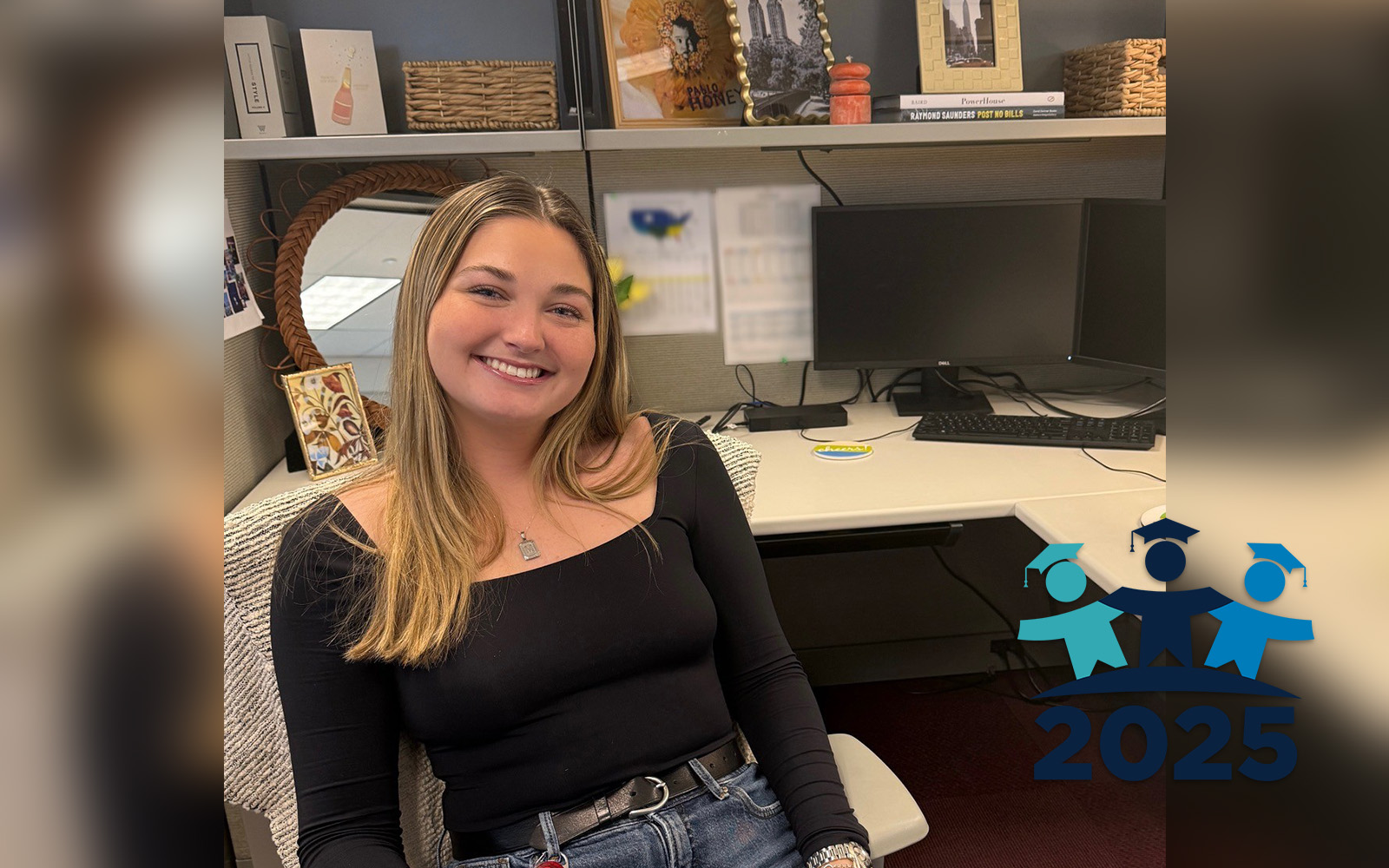Hot flashes are just part of the hormonal changes that take place when a woman reaches the end of her reproductive years. We sat down with Dr. Anthony Luciano, veteran UConn Health obstetrician and gynecologist, and graduate of the UConn School of Medicine, to get a better understanding of menopause.

What is happening physiologically when a woman reaches menopause?
Her ovaries stop producing estrogen, and with that comes the cessation of menstrual periods.
That usually happens normally in a woman around the age of 51, plus or minus a couple of years. In some women it may happen earlier as a result of a variety of different causes, including genetics (if your mother had premature menopause, you are also likely to go through menopause early), hormonal problems, autoimmune problems, surgery, or radiation. In some women it may happen a little bit later, beyond the age of 55, which is rather unusual.
As blood estrogen levels progressively decrease with menopause, the woman becomes progressively symptomatic to variable degrees, some women more than others, again according to their genetic makeup.
And that’s when the hot flashes start?
It usually begins with hot flashes and night sweats, and sleep disturbances. That’s associated with a decrease in estrogen production and circulating estrogen levels. As a consequence women experience these physiologic reactions.
Hot flashes are really related to a discharge of certain hormones from the brain, called catecholamines, which makes her feel like she’s too hot. Consequently, to dissipate heat she develops sweating, and with that, elevated heart rates, sometimes a feeling of heat coming from the chest toward the face, and these things can be quite disturbing. That’s the annoying part. When hot flashes at night, and we refer to them as night sweats, they wake up a woman from her sleep, interrupting her sleep pattern. When night sweats happen often, 10, 15, 20 times a night, her REM sleep is diminished, which can bring its own problems, including fatigue, irritability, and forgetfulness. During menopause, they also can experience joint stiffness, joint pain, and muscle aches. They may also experience vaginal dryness. These are the more common symptoms of menopause which can be quite disturbing
For how long do the symptoms persist?
They usually occur within six to nine months of menopause and then they continue usually for the next two or three years. It varies a lot from woman to woman, and it also varies in different populations, and according to body habitus (physique). For example, overweight women will have more menopausal symptoms than thinner women, and black and Hispanic women have more menopausal symptoms than Asian women.
It’s important to remember, menopause is a natural occurrence in a woman’s life. The only reason we’re concerned about menopause is, we’re concerned about its symptoms.
For many women, these symptoms are relatively mild and quite tolerable. Many of them don’t need anything, and after a year or two or three, the symptoms go away and they feel fine. But for some women the symptoms can be very severe and very problematic to the point that they really need help, some sort of therapies to reduce the symptoms and make them more tolerable.
What we learned from these particular studies is that hormones are not good in older women, beyond the age of 60, and for them the potential risks far outweigh the benefits.
But in younger menopausal women who are symptomatic, healthy and under the age of 60, the benefits of hormone therapy far outweigh the risk.
–Dr. Anthony Luciano
How do you help women manage these symptoms?
We have a variety of interventions. The one we use most often and by far the most effective is to give them small doses of the hormones that they are lacking. What we try to do is give them enough hormone to increase the levels enough that they become less symptomatic, without restoring menstrual bleeding.
But hasn’t hormone replacement therapy been shown to be dangerous?
Hormone replacement therapy is dangerous when too much hormones are given for too long and especially to women who are older and may have too many comorbidities.
There have been lots of studies that have looked at the pros and cons of hormone replacement therapy. They’ve found increased risks of breast cancer, cardiovascular disease, stroke, blood clots, and other problems. The study that you’re referring to was published in the early 90s, the Women’s Health Initiative study, which looked at the relative risks and benefits of hormone replacement therapy.
What we learned from these particular studies is that hormones are not good in older women, beyond the age of 60, and for them the potential risks far outweigh the benefits.
But in younger menopausal women who are symptomatic, healthy and under the age of 60, the benefits of hormone therapy far outweigh the risk.
When they looked at the Women’s Initiative study more carefully, and divided the women into age groups, younger or older than 60, they found that in the younger group, the risks were outweighed by the benefits but beyond the age of 60, the risks outweighed the benefits. Because of this study, the American Medical Association and the American College of Obstetrics and Gynecology came out with the recommendations that hormone replacement therapy should be considered in symptomatic menopausal women for the shortest duration possible and at the lowest possible dose.
How are duration and dose determined?
It’s determined individually: Not only symptomatic women, but also women who are not at risk for side effects from hormone replacement therapy. Hormone replacement is contraindicated in menopausal women with a strong family history of breast cancer or estrogen-dependent cancer, in women who have a strong family history of blood clots and stroke, and women with liver disease. Once we identify those symptomatic women who don’t have contraindications to hormones, we feel comfortable about giving them the lowest effective dose of hormones in the safest way possible.
Women who are overweight, for example, because of their obesity, produce extra estrogen. So in these women we want to give a lower dose of estrogen because they’re already making some estrogen. Women who smoke, for example, when we give them estrogen, they have an increased risk of hypertension, stroke, and cardiovascular disease. And estrogen may exacerbate the hypertension and increase the risk of stroke especially if taken orally.
Some hormones are less beneficial and more risky than others. The worst way to give hormones is orally, because it affects the liver and it can predispose to blood clots. If we give it transdermally—as a patch, a spray or a cream—it’s a lot safer. It is associated with less risks and less side effects.
As for the shortest duration of time, if a woman is in her early 50s, I tell her that the studies have shown that if you take hormones for three years or less, you do not increase your risk of breast cancer, so it’s safe to use it for three years. I would see the patient every year to reevaluate her need and responses to therapy until the age of 55. By age 55 we start thinking of other options besides hormones. Other medications that also are effective, albeit not as effective as estrogen, are selective serotonin reuptake inhibitors (SSRI). Antidepressants are in this class of drugs. There are some that are specific for hot flashes and night sweats.
What about osteoporosis?
We’ve talked about the immediate symptoms of menopause. Delayed consequences of menopause include bone loss and the risk of osteoporosis. The risk of osteoporosis is due specifically to lack of estrogen. Age plays a little role but estrogen deficiency plays a major role for osteoporosis. Although hormone replacement may decrease the risk of osteoporosis and fractures, we have a variety of other drugs that are specific for osteoporosis that will not involve hormones. This is something we have to keep an eye on for the rest of her life, even when the immediate symptoms have subsided.
To learn more about the Women’s Center at UConn health, please visit health.uconn.edu/women.



